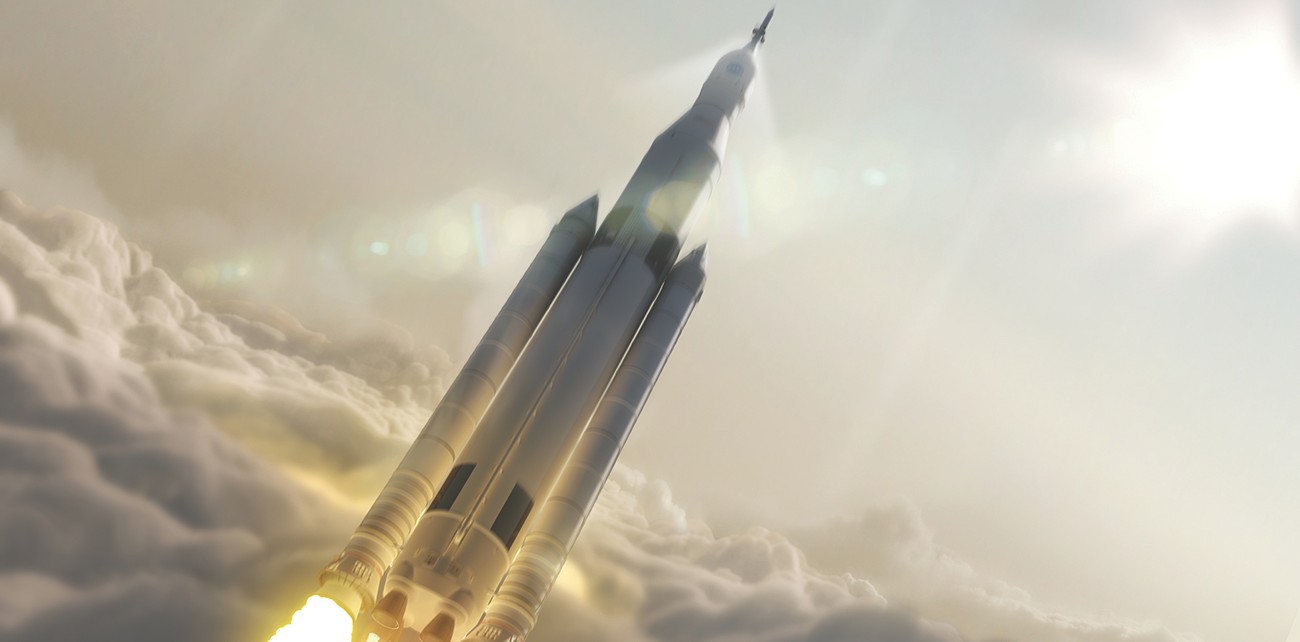Module 7: Chapter 7: Stoichiometry of Chemical Reactions
Section outline
-

Figure 7.1 Many modern rocket fuels are solid mixtures of substances combined in carefully measured amounts and ignited to yield a thrust-generating chemical reaction. By: Rice University Openstax CC BY NC SA
Chapter Outline
- Writing and Balancing Chemical Equations
- Classifying Chemical Reactions
- Reaction Stoichiometry
- Reaction Yields
- Quantitative Chemical Analysis
Upon completion of this module, you will be able to:
Writing and Balancing Chemical Equations (7.1)
- Derive chemical equations from narrative descriptions of chemical reactions. (CLO1) (CLO2)
- Write and balance chemical equations in molecular, total ionic, and net ionic formats. (CLO2)
Classifying Chemical Reactions (7.2)
- Define three common types of chemical reactions (precipitation, acid-base, and oxidation-reduction) (CLO1)
- Classify chemical reactions as one of these three types given appropriate descriptions or chemical equations (CLO1)(CLO2)
- Classify chemical reactions as one of these three types given appropriate descriptions or chemical equations (CLO1)(CLO2)
- Identify common acids and bases (CLO1)(CLO3)
- Predict the solubility of common inorganic compounds by using solubility rules (CLO1)(CLO2)
- Compute the oxidation states for elements in compounds (CLO2)
Reaction Stoichiometry (7.3)
- Explain the concept of stoichiometry as it pertains to chemical reactions (CLO1)
- Use balanced chemical equations to derive stoichiometric factors relating to amounts of reactants and products (CLO1)(CLO2)
- Perform stoichiometric calculations involving mass, moles, and solution molarity (CLO2)
Reaction Yields (7.4)
- Explain the concepts of theoretical yield and limiting reactants/reagents. (CLO1)
- Derive the theoretical yield for a reaction under specified conditions. (CLO2)
- Calculate the percent yield for a reaction. (CLO2)
Quantitative Chemical Analysis (7.5)
- Describe the fundamental aspects of titrations and gravimetric analysis. (CLO1)
- Perform stoichiometric calculations using typical titration and gravimetric data. (CLO1)(CLO2)
To achieve these objectives:
- Read and view the Module 7: Chapter 7: Stoichiometry of Chemical Reactions in Moodle
- Read Chapter 7: Stoichiometry of Chemical Reactions in the OpenStax Chemistry: Atoms First 2e Pressbook
- Complete the Module 7: Chapter 7: Stoichiometry of Chemical ReactionsAssignment
- Complete the Module 7: Chapter 7: Stoichiometry of Chemical Reactions Discussion
- Complete the Module 7: Lab 7: Video (VWS) Assignment - Chemical Reactions
- Complete the Module 7: Lab 7: Experiment - Reactants & Products
- Complete the Module 7: Lab 7: Report Assignment - Reactants & Products
Module Pressbooks Resources and Activities
You will find the following resources and activities in this module at the Pressbooks website. Click on the links below to access or complete each item.
Background Colour
Font Face
Font Kerning
Font Size
Image Visibility
Letter Spacing
Line Height
Link Highlight
Text Colour
